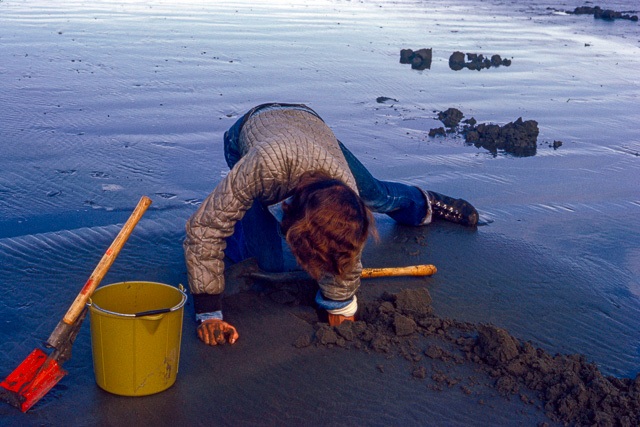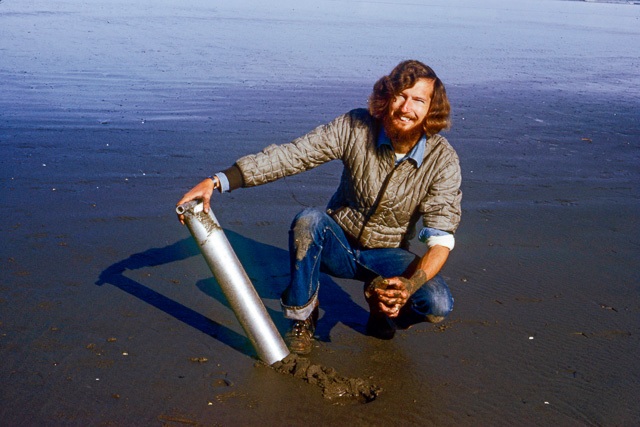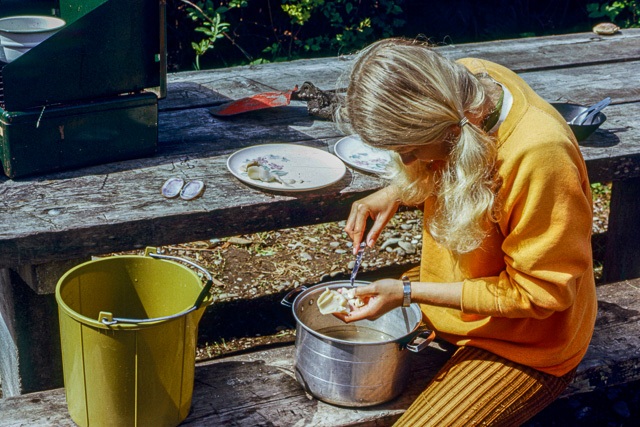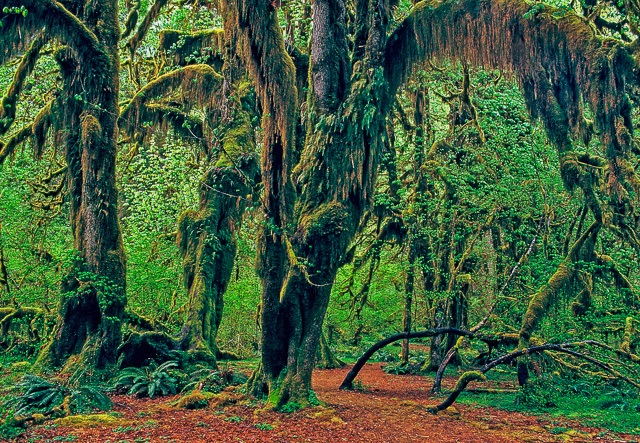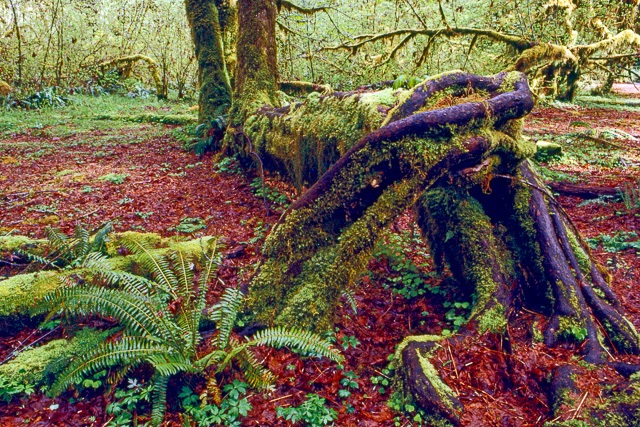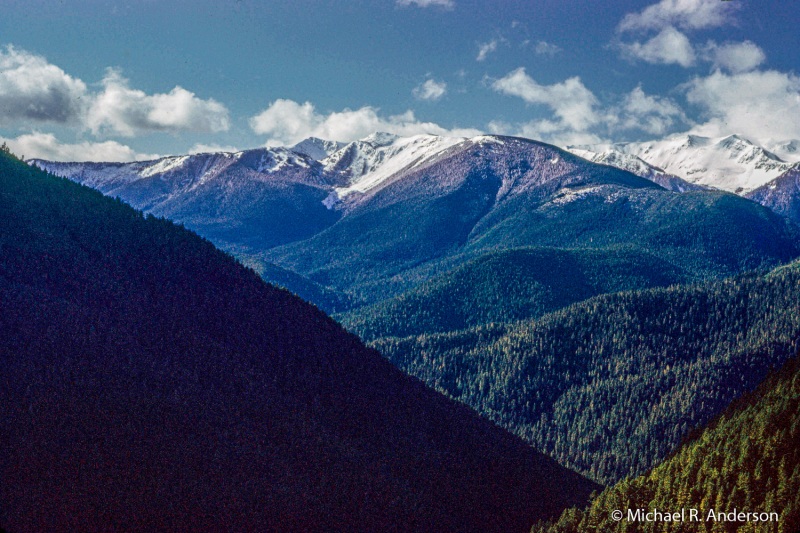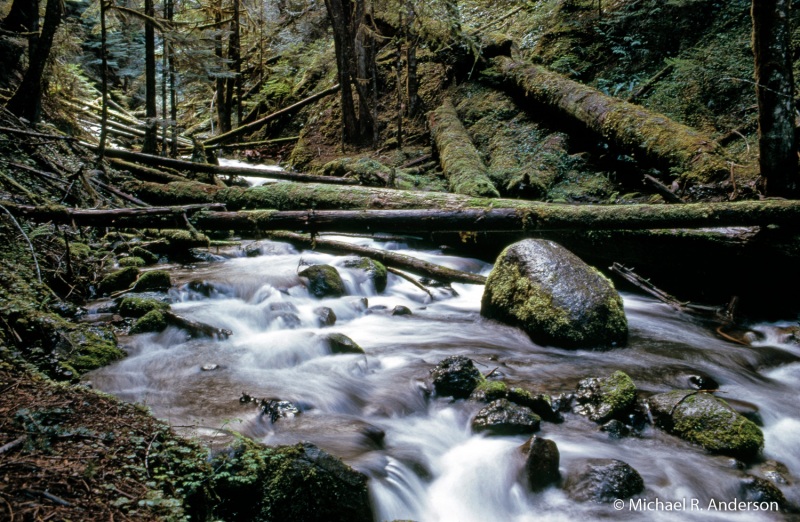The Trip – Part 17: Into Washington State
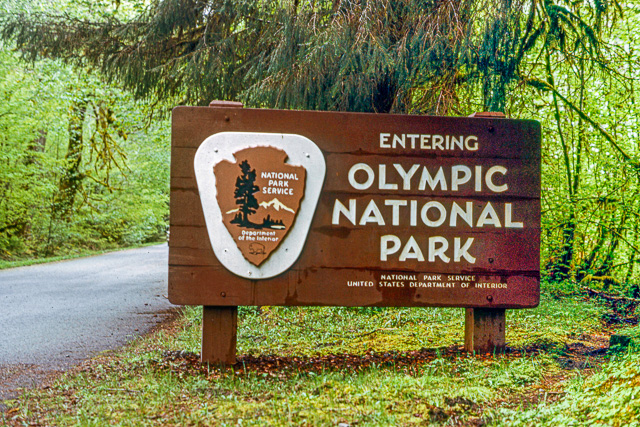
Crossing the Columbia River from Astoria, Oregon, Highway 101 heads west towards Long Beach, Washington before heading east again to get around Willapa Bay and North Bay. Nearing the Olympic Peninsula it veers west again until it reaches the Pacific shoreline in a narrow coastal strip of Olympic National Park. Our first stop was at the Kalaloch Campground where we spent a few days camping on the beach.
The first morning there we went to check out the beach. There were quite a few people walking around so we asked if something special was happening. We were told that at this time of the month, when there are very low tides, people come here to look for razor clams. I was told by a Ranger that we didn’t need a license to do this, so I asked a guy on the beach how to find clams. He told me to walk around on the wet packed sand that has been exposed by the tide and take hard steps or stomp your feet. If there is a razor clam under the sand nearby, that will scare them to pull in their siphon and close their shell. This creates a small dimple in the surface of the sand. Then you quickly dig, shove your hand into the wet sand and, if lucky, feel a clam that you can pull up.
We went back to our campsite to get our camp shovel and pail and tried our luck. It wasn’t long before I had a couple in the pail. One of the guys on the beach showed me how to use a special clam digger and, since he had finished digging, he lent his to me. It was just a tube with a handle on top and open on the bottom. The top also had a small hole in it. When you find the dimple in the sand, you push the tube down, then cover the hole with your thumb and pull the tube back up. If there’s a clam, you’ll find it in the sand that you dump out of the tube. This was definitely easier than digging and we soon had 12 – 15 clams.
We didn’t know how to prepare the clams, of course, so when we returned the borrowed digger, we asked the people at that campsite if they could tell us what to do. As advised, we boiled water and then placed a clam in the water for a few seconds. After taking it out again it was easy to open the shell and remove the clam. Then we looked for a small bulge in the clam and cut that out because it is full of sand. At that point we could wash them off, slice them up, and fry them up to eat. It was a nice lunch.
The next day we took a drive up into the Hoh Rain Forest. According to the Park Service, this “is one of the finest remaining examples of temperate rainforest in the United States and is one of the park’s most popular destinations.” The average annual rainfall here is 140″. That’s hard to imagine but it sure leaves almost everything covered in green — moss, ferns, grass, trees, everything’s green. The air had a very interesting fresh smell that was not from a spray can. Kathy held an umbrella so that I could take a few pictures. It was, after all, raining when we visited.
Leaving the beach, Highway 101 heads northeast, then northwest, then north again before finally heading east towards Port Angeles. Then we followed Hurricane Ridge Road south into the park to the Heart o’ the Hills campground. This was a nice place to hang out for a day or two. Our campsite was on the edge of a small stream that called for a camera and tripod to capture its motion.
We were very close to Port Angeles, Washington, which sits on the Strait of Juan de Fuca. You can catch a car ferry there that will take you to Victoria, British Columbia in Canada. So, heading there was an easy decision to make.
